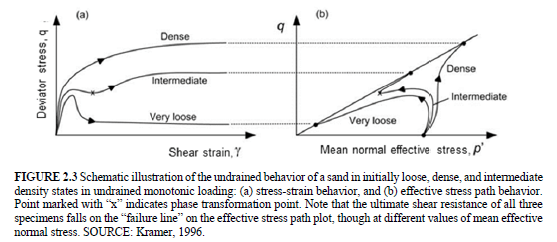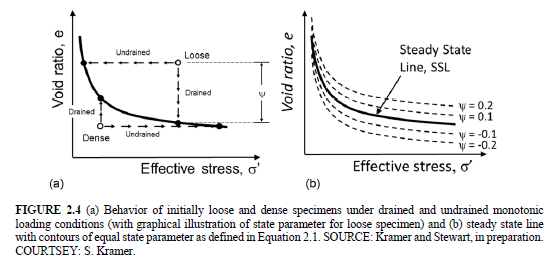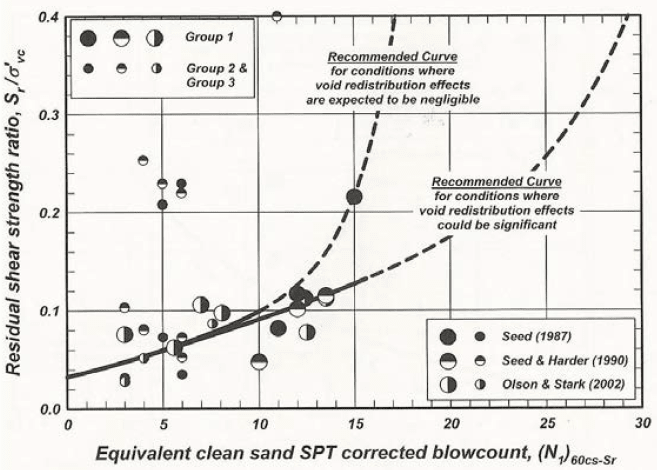Dear all,
I have this doubt at the office. We considered an internal friction angle for a liquefied sand, let’s say 28 degrees. The residual internal friction angle (after liquefaction) must be a lower value, let’s say 10 degrees.
Structural engineers asked: why is that possible since liquefaction causes densification and that makes a greater friction angle.
So the question is: why is the residual (post-seismic) friction angle of a liquefied sand lower than the static friction angle? Is it a critical state soil mechanics topic or isn’t there always densification?
I appreciate your help on this.
I have this doubt at the office. We considered an internal friction angle for a liquefied sand, let’s say 28 degrees. The residual internal friction angle (after liquefaction) must be a lower value, let’s say 10 degrees.
Structural engineers asked: why is that possible since liquefaction causes densification and that makes a greater friction angle.
So the question is: why is the residual (post-seismic) friction angle of a liquefied sand lower than the static friction angle? Is it a critical state soil mechanics topic or isn’t there always densification?
I appreciate your help on this.



